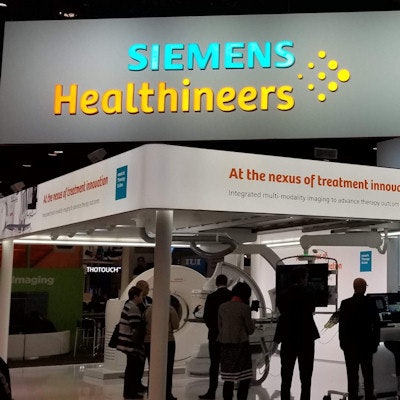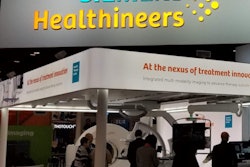
At this week's Society of Nuclear Medicine and Molecular Imaging (SNMMI) annual meeting, Siemens Healthineers is building on the foundation of its Biograph Vision PET/CT system, which received clearance from the U.S. Food and Drug Administration (FDA) in June 2018, with artificial intelligence (AI) imaging techniques and multiparametric PET.
The hybrid scanner still features the company's Optiso ultradynamic range (UDR) detector technology based on silicon photomultipliers rather than conventional photomultiplier tubes, as well as a large 78-cm bore designed for better positioning of radiotherapy devices for bariatric patients. Now time-of-flight PET is available on both the Biograph Vision PET/CT and Biograph mCT.
Multiparametric PET is powered through Siemens' internally developed AI Automatic Landmarking and Parsing of Human Anatomy (ALPHA), which provides an arterial input function technique. The algorithm finds the aorta for the clinician to acquire the information to perform the arterial input function.
ALPHA initially was released on the syngo.via platform to handle image registration and was trained on CT datasets to discover anatomical landmarks in the brain, skull, ribs, spine, extremities, etc. Among ALPHA's PET-related functions is the ability to correctly align the same regions of interest on the same patient over the course of multiple scans, thus compensating for different body placement on a gantry.
ALPHA also provides the foundation for other AI applications, including image registration, spine/rib labeling, and single lesion segmentation with PET Response Criteria in Solid Tumors (PERCIST). Siemens is looking to expand its AI offerings with several prototypes that currently are works in progress.


















